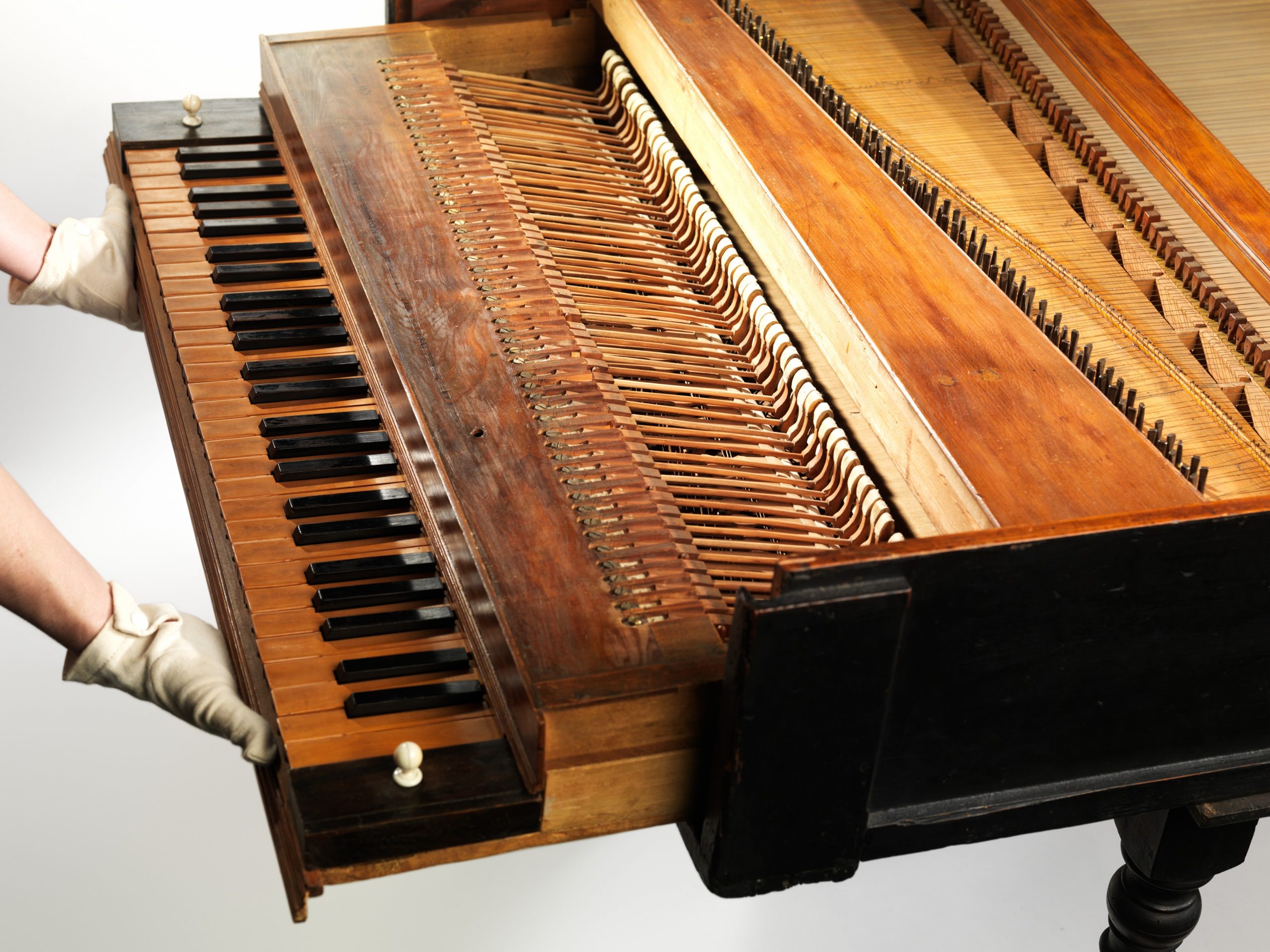
The piano is arguably the single most important instrument of Western music. It is an incredibly versatile instrument, capable of playing virtually anything an orchestra can. The world’s oldest existing piano, dating back to 1720, currently resides at New York’s Metropolitan Museum of Art.
The piano was first invented by the Italian instrument-maker Bartolomeo Cristofori (1655-1731) in the year 1700 when he worked for Ferdinando de’ Medici, the Grand Prince of Tuscany. Then, it was named “gravicembalo col piano e forte” which translates to “harpsichord with soft and loud,” a name which literally described the instrument’s function. The harpsichord, the piano’s predecessor, was played by plucking strings with a quill, resulting in a uniform volume, whereas the piano’s strings were struck by hammers. This allowed for greater control of the sound’s volume—known in music as dynamics.
Portrait of Bartolomeo Cristofori (1655-1731), 1726. Photo by Fine Art Images/Heritage Images via Getty Images.
Cristofori was a masterful innovator. His piano at the Metropolitan Museum of Art was constructed similarly to the Italian harpsichord or clavichord. Both are housed in a wing-shaped case with a single keyboard. The Met’s piano keyboard, however, has only 54 keys in comparison to the modern piano’s 88. His design initially overcame several technical challenges faced by other inventors of his era, setting the standard for piano design for the following 75 years. However, due to its complexity and cost, subsequent 18th-century makers often omitted some of his features, only to later rediscover and reintegrate them.
Grand Piano by Bartolomeo Cristofori (1720). Photo: Public domain, courtesy of the Metropolitan Museum of Art.
Cristofori’s ingenious inventions included an “escapement” mechanism that allowed the hammer to instantly retreat from the string after striking it, preventing damping and permitting harder strikes than a clavichord. He also introduced a “check” to prevent the hammer from rebounding to strike the string again, a jack dampening mechanism for silencing strings when idle, and isolated the soundboard from tension-bearing parts for enhanced vibration.
Only two of Cristofori’s pianos survive outside of the Met. One piano from 1722 resides at the Museo Strumenti Musicali in Rome, and the other, created in 1726, sits in the Musikinstrumenten-Museum in Leipzig. Both those pianos include a switching mechanism that the Met’s does not, which, if activated, controls the hammer to quieten the instruments’ volume by striking only one of each key’s two strings.
Grand Piano by Bartolomeo Cristofori (1720). Photo: Public domain, courtesy of the Metropolitan Museum of Art.
Cristofori’s invention faced a slow reception in Italy until Queen Maria Barbara de Braganza of Spain purchased five pianos, crafted either by Cristofori himself or his pupil Giovanni Ferrini. The earliest musical pieces explicitly composed and published for the piano were Lodovico Giustini’s 12 “Sonate da cimbalo di piano e forte detto volgarmente di martelletti” (Florence, 1732). These pieces were dedicated to Don Antonio of Portugal, uncle of Queen Maria Barbara. By the turn of the 20th century, no middle class European or North American home went without a piano, and every great Western composer since Mozart has played the instrument.
What’s the deal with Leonardo’s harpsichord-viola? Why were Impressionists obsessed with the color purple? Art Bites brings you a surprising fact, lesser-known anecdote, or curious event from art history.